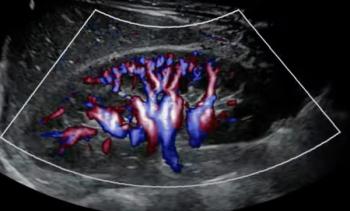
PACS storage presents a tale of two archives
Storage is a hot topic in PACS. The best way to cover all your clinical and legal bases is to have two archives, according to Dr. Keith Dreyer, speaking at the Radiology into the 21st Century congress in Boston.
Storage is a hot topic in PACS. The best way to cover all your clinical and legal bases is to have two archives, according to Dr. Keith Dreyer, speaking at the Radiology into the 21st Century congress in Boston.
PACS is optimized by using both a clinical priors and a disaster recovery archive, said Dreyer, vice chair of radiology information services at Massachusetts General Hospital and an assistant professor of radiology at Harvard Medical School.
For a clinical priors archive, the best method for storage is a redundant array of inexpensive disks (RAID), Dreyer said. It's important for facilities to remain vendor-independent. Getting locked into one vendor's storage option could result in much higher costs.
"We're all trying to do this on a limited or fixed budge. Cost is always important," he said.
The RAID allows for speedy access to data and variable depth of data, two attributes important for a clinical priors archive. Radiologists pulling prior images find having to wait two, four, or even five seconds for the images to load unacceptable, Dreyer said.
The price of a RAID can range from $4000 to $40,000. The difference in price can be attributed to the level of management software and speed associated with the storage media, he said.
Several types of storage arrangements are available for clinical archive purposes. These include network attached storage (NAS), storage area network (SAN), and direct attached storage (DAS). All methods are adequate for a clinical priors archive, according to Dreyer.
The storage needs for disaster recovery archives are very different than for clinical priors. Speed is not nearly as important, and the depth of data stored is fixed and regulated. Whereas lossy compression is widely accepted for a clinical priors archive, lossless compression is the current standard for a disaster recovery archive, Dreyer said.
The most important need for a disaster recovery archive is removable media.
"If it's not removed, it's not secure," he said.
The many types of removable media include digital video disk (DVD), recordable compact disc (CDR), magneto-optical disk (MOD), super digital linear tape (sDLT), and linear tape open 2 (LTO2).
Removable media price varies with performance, which boils down to density and speed. Prices for removable media can range from $250 to $2500.
Despite the different speed and data depth needs, cost, reliability, and upgrading are always important for both archives, Dreyer said.
Newsletter
Stay at the forefront of radiology with the Diagnostic Imaging newsletter, delivering the latest news, clinical insights, and imaging advancements for today’s radiologists.




























